Dimorphotheca chrysanthemifolia
Dimorphotheca chrysanthemifolia (Vent.) DC.
Family: Asteraceae
Common names: cape mountain marigold, chrysanth rain daisy (Eng.); geelbergmargriet, gousblom (Afr.)
Introduction
Dimorphotheca chrysanthemifolia is an upright shrublet with distinctive coarsely toothed leaves and magnificent large golden-yellow flowerheads which are striking to the eye.
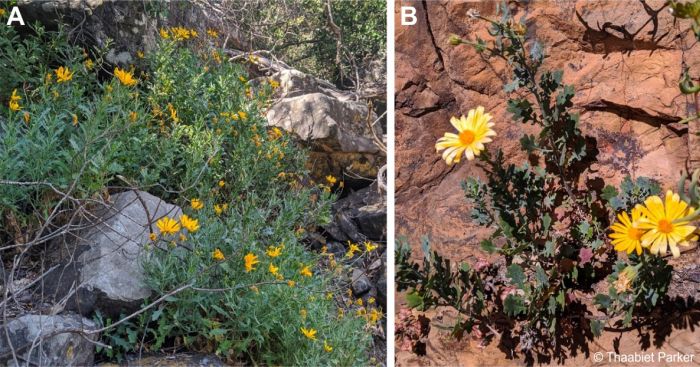
Fig. 1. Dimorphotheca chrysanthemifolia growth form and habitat: (A) Du Toits Kloof in semi-shade (B) Hex River Valley in full sun.
Description
Description
Dimorphotheca chrysanthemifolia is an erect perennial shrublet up to 1 m tall. The stems are branched and strongly lignified at the base. The leaves are alternate, oblong or oblanceolate and narrowed towards the base into a narrow petiole, typically glandular-hairy, 20-70 mm long and 5-40 mm wide, margins coarsely dentate to pinnatifid, lobes up to 10 mm long and sometimes extending as far the midrib.
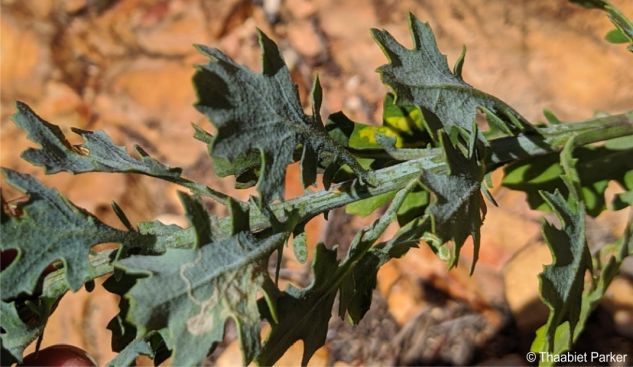
Fig. 2. Distinctive toothed to pinnatifid leaves of Dimorphotheca chrysanthemifolia.
The plant bears large solitary, radiate flowerheads which can measure up to 70 mm in diameter, on naked flower stalks. The flowerheads are typical daisies, each flowerhead is an inflorescence containing multiple small flowers, which are called florets. The ray florets form the outer ring of the inflorescence and the lamina (commonly called ‘petals’) are yellow above and yellow streaked with maroon below. The central disc florets are yellow. Fruits are produced from the disc and ray florets. Ray fruits are smooth, triangular and minutely winged. Disc fruits are flattened and heart-shaped with wings. Flowering time is late winter to summer (from August to December).
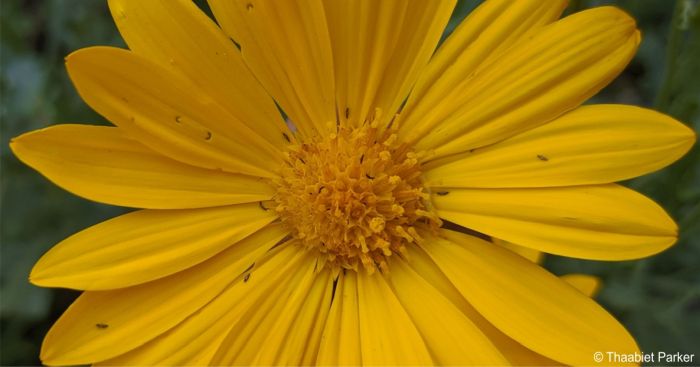
Fig. 3. A close-up inside a flowerhead of Dimorphotheca chrysanthemifolia showing the disc and ray florets.
This species is often confused with Dimorphotheca montana, with which it shares its yellow ray florets, but can easily be distinguished by being a shrublet with erect growth form and large coarsely dentate to pinnatifid leaves as opposed to D. montana which is a herb with rhizomatous growth form and smaller, lanceolate to oblanceolate leaves with smaller teeth on the margins.
Conservation Status
Status
According to the Red List of South African plants this species is unassessed and therefore listed as not threatened, having a conservation status of Least Concern (LC).
Distribution and habitat
Distribution description
The geelbergmargriet is distributed in the Greater Cape Floristic Region (GCFR), centred in the mountainous regions of the Worcester and Montagu districts in the Western Cape, often seen on sandstone slopes in the Hex River Valley, with some individuals seen as far west as the Simonsberg. It is a hardy plant, growing in full sun or semi-shade, on steep slopes and in rocky kloofs, and withstanding the high summer temperatures of the area, which can rise to up to 35℃.
Derivation of name and historical aspects
History
The genus name Dimorphotheca comes from the Greek words dis meaning ‘twice’, morphe, ‘a shape’ and theka, meaning ‘fruit’. The name refers to the two kinds of fruits (cypselae/achenes) found in one and the same fruiting head. The name Dimorphotheca was originally used to only apply to those species with dimorphic fruits (Norlindh 1943), but molecular (DNA) studies showed that several species with monomorphic fruits that were formerly placed in the genera Castalis and Osteospermum, also belong in Dimorphotheca (Nordenstam 1994; Nordenstam & Källersjö 2009). The species name means ‘leaves like the genus Chysanthemum’ or ‘chrysanthemum-leaved’ and is derived from the genus Chrysanthemum (this name meaning ‘golden flower’ from the Greek chrysos meaning ‘gold’ and anthemon ‘flower’) and the Latin folia, meaning ‘leaves’. Chrysanthemum is a genus of well-known ornamental plants commonly called ‘chrysanths’. The Afrikaans common name geelbergmargriet means ‘yellow mountain daisy’, and gousblom means ‘golden flower’ and is also applied to other yellow-flowered species of Dimorphotheca, Arctotis and Gazania.
Dimorphotheca is a member of the Asteraceae, commonly called the daisy family. Asteraceae is the largest plant family, consisting of nearly 25 000 species worldwide and boasting a diversity growth forms; including herbs, shrubs and trees.
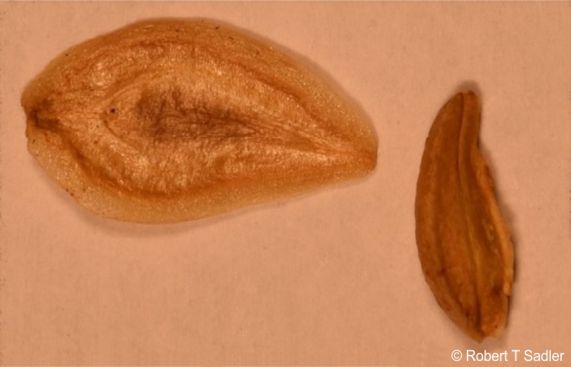
Fig. 4. Two fruit types produced by Dimorphotheca chrysanthemifolia, left the flattened disc fruit and right the nutlet-like ray fruit.
Ecology
Ecology
Dimorphotheca chrysanthemifolia produces two types of fruit; flattened heart-shaped disc fruits with large wings and smaller nutlet-like ray fruits. Disc fruits disperse further via wind than the heavier ray fruits which drop near the plant. This is thought to be an bet-hedging strategy, to account for the varied environments a fruit could find itself in (De Casas et al. 2015; De Waal et al 2015). Observations of pollinators are rare, but flowers are thought to be pollinated primarily by flies, like other species of Dimorphotheca in the region.
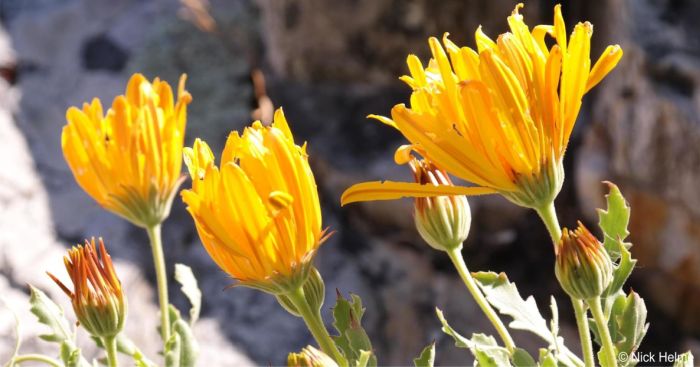
Fig. 5. The underside of closing flowerheads of Dimorphotheca chrysanthemifolia showing the calyx and maroon-striped underside of the lamina.
Uses
Use
There are no known medicinal or cultural uses for the geelbergmagriet. The genus Dimorphotheca is well known for its use in landscaping and Dimorphotheca chrysanthemifolia was widely cultivated in the 19th century in England in botanical gardens, but in current times has been replaced by hybrids of Dimorphotheca jucunda and Dimorphotheca fruticosa. (Bailey 1914; Norlindh 1943). This species is ideally suited to fynbos gardens, and to temperate and Mediterranean-climate gardens with acidic, well-drained soil but can also be cultivated in summer-rainfall regions, and in containers.
Growing Dimorphotheca chrysanthemifolia
Grow
While the seeds are available online, Dimorphotheca chrysanthemifolia is not known to be cultivated in South Africa and thus detailed knowledge of its preferred growing conditions is not known. However, it should have similar growing conditions to other perennial Dimorphotheca, such as Dimorphotheca cuneata, and should thus preferably be propagated from seed. In the winter-rainfall Western Cape, sow seeds in late-autum-early winter, ideally in pots or seedling trays, as germination time is short (maximum 10 days). Use a well-drained, acidic soil medium. Unlike with annual Dimorphotheca, do not sow close together as the adult perennial plants can grow quite large. The growing medium must be slightly moist before sowing. Cover the seeds with fine-milled bark or any other fine medium such as seedling mix or sand and water them. Do not bury the seeds deep, up to a max of 5 mm, or this will result in deformed or ‘leggy’ stems. During the seedling stage, make sure the soil is always moist but never waterlogged to prevent damage to the roots, and reduce the chance of fungal infections and pests. Importantly, as with all other Dimorphotheca, this species requires a position in full sun. Transplant in late winter when conditions are warmer and less overcast. Seedlings will grow rapidly once transplanted if in full sun. This will provide plants time to establish before flowering in September-November. Soil should be acidic to neutral (pH 5-7), sandy and well-drained, and avoid strong fertilisers such as manure but it can be fertilised with well-rotted compost applied as a mulch or infrequently with seaweed-based organic fertilisers or slow-release fertilisers. Once fully grown, the plant can be supported to ensure it grows erect as in the wild plants or left to straggle across rocks in the garden (Eliovson 1957).
References
- Bailey, L.H. 1914. The Standard Cyclopedia of Horticulture, vol. 2. Macmillan and Co., London.
- De Waal, C., Anderson, B. & Ellis, A.G. 2015. Dispersal, dormancy and life-history tradeoffs at the individual, population and species levels in southern African Asteraceae. New Phytologist 210:356–365.
- De Casas, R., Donohue, K., Venable, D.L. & Cheptou, P.O. 2015. Gene-flow through space and time: dispersal, dormancy and adaptation to changing environments. Evolutionary Ecology 29:813–831.
- Eliovson, S. 1973. South African wild flowers for the garden. Macmillan, Johannesburg.
- Helme, N. 2015. Observation of Dimorphotheca chrysanthemifolia, Mostertshoek Twins, Hex River Mountains, Western Cape. iNaturalist. Online. https://www.inaturalist.org/observations/11114213.
- Nordenstam, B. 1994. Tribe Calenduleae. Pp. 365-375 in: Bremer, K. (ed.), Asteraceae: Cladistics and Classification. Timber Press, Portland.
- Nordenstam, B. & Källersjö, M. 2009. Calendulae. Chapter 35:527-537 in: Funk, V.A., Susanna, A. Stuessy, T.F. & Bayer, R.J. (eds). Systematics, evolution, and biogeography of Compositae. International Association for Plant Taxonomy, University of Vienna.
- Norlindh, T. 1943. Studies in the Calenduleae I: Monograph of the genera Dimorphotheca, Castalis, Osteospermum, Gibbaria and Chrysanthemoides. C.W.K. Gleerup, Lund.
- Raimondo, D., Von Staden, L., Foden, W., Victor, J.E., Helme, N.A., Turner, R.C., Kamundi, D.A. & Manyama, P.A. (eds) 2009. Red list of South African plants. Strelitzia 25. South African National Biodiversity Institute, Pretoria.
- Smith, C.A. 1966. Common names of South African plants. Memoirs of the Botanical Survey of South Africa No. 35. Government Printer, Pretoria.
Credits
Thaabiet Parker
Compton Herbarium
April 2024
Acknowledgements: the author thanks Robert T. Sadler for the image of the fruits and Nick Helme for the image showing the calyx.
Plant Attributes:
Plant Type: Shrub
SA Distribution: Western Cape
Soil type: Sandy
Flowering season: Spring, Early Summer, Winter
PH: Acid, Neutral
Flower colour: Yellow
Aspect: Full Sun, Morning Sun (Semi Shade), Afternoon Sun (Semi Shade)
Gardening skill: Average
Special Features:
Horticultural zones








Rate this article
Article well written and informative
Rate this plant
Is this an interesting plant?
Login to add your Comment
Back to topNot registered yet? Click here to register.